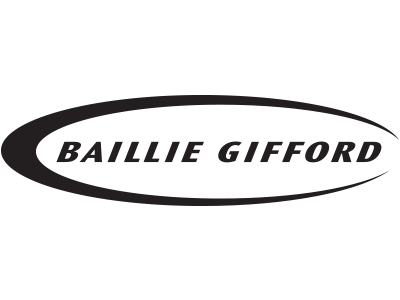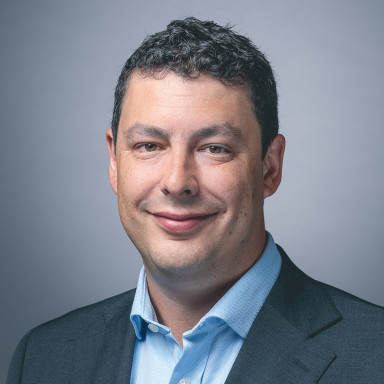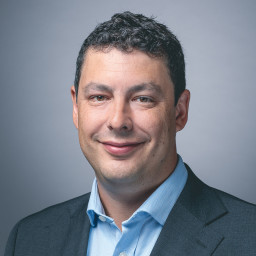- The managers have almost four decades of combined experience in the industry and are supported by the vast resource and expertise of Baillie Gifford
- We like their long-term, disciplined investment process, which has helped the managers deliver good long-term performance, albeit with higher volatility than peers
- We think this is a good option for diversified exposure to stock and bond markets across the globe
- This fund is on our Wealth Shortlist of funds chosen by our experts for their long-term performance potential
How it fits in a portfolio
Baillie Gifford Managed invests across six major investment areas: shares in the UK, the US, Europe, Asia, the emerging markets, and bonds. It provides investors a huge amount of diversification in one fund, but the investments in emerging markets adds risk.
Shares tend to make up more of the fund than others in the same sector, and you can expect that over the long term, the average amount invested in shares will be around 75%. The fund also has a bias towards investing in companies that have potential for significant growth into the future.
The combination of the amount invested in shares and the type of companies the managers like to invest in means we consider the fund to be a more adventurous option than many of its peers. We therefore expect more ups and downs in the value of this fund over the short term, and investors should be aware of the potential for the fund to be highly volatile.
The fund could be used to boost the growth of a more defensive investment portfolio with a focus on bonds or provide exposure to companies with the potential for long-term growth across the globe.
Manager
Iain McCombie and Steven Hay have been the fund's lead managers since November 2012. McCombie specialises in UK equities and joined Baillie Gifford in 1994. Hay joined in 2004 and is a fixed income specialist.
McCombie and Hay have the support of six other experienced investors who are all experts in their fields. They are representatives of the fixed income, US, Europe, emerging markets and developed Asia equity teams. The managers can also draw upon the vast resources at Baillie Gifford to help with additional research, challenge and analysis.
Process
The managers like to keep things simple. They tend to invest around 75% of the fund in shares because they think shares will be the main driver of returns over the long run. The managers set a lower limit of 65% to be invested in shares and an upper limit of 85%, in-line with the sector maximum. The rest is invested in bonds and cash with the aim to dampen volatility and add diversification. The bond part of the fund is made up of government and company bonds.
The shares section of the portfolio is managed in line with Baillie Gifford's growth-focused investment philosophy. The managers look for high-quality companies with clear and sustainable advantages over the competition. They consider a variety of factors, such as how fast the industry is growing, how the company's pricing structure works, how easily their products or services could be copied and how loyal customers tend to be. They also consider the firm’s financial stability, the quality of the management team, and whether senior managers' interests are aligned with long-term shareholders.
The managers invest globally in shares and bonds, which adds diversification. The proportion invested in different regions varies over time and depends on where the managers feel the best opportunities are.
The team have increased the amount invested in shares over the last 12 months and currently have around 82% of the fund invested there. The remaining 18% is almost entirely invested in bonds, with the rest held in cash. The managers tend to invest in companies for the longer term, which means changes aren’t made too often. That said, the managers will make changes depending on the opportunities available.
Recent additions to the fund are AutoStore, a company that specialises in warehouse automation, and Greggs, the British bakery chain. On the other hand, the team’s analysis showed that their investment rationale for both Peloton and Teladoc was broken and so both were sold.
The bond section of the fund invests in government bonds as well as investment grade and higher-risk, high-yield corporate bonds. Interest rates and yields have risen over 2022, which has made bonds more attractive investments going forward. However, the amount invested in bonds has remained very similar over the year, because the team continue to believe that on a long-term view, company shares offer better value. Please note that the managers can also invest in derivatives, which increases risk if used.
Typically around 5%-10% of the fund is held in cash. This acts as a cushion when other assets decline in value and can also provide a source of funding for the managers when buying opportunities arise. 2022 was a year where the team used their cash to invest in shares as markets fell in value.
Culture
Baillie Gifford is an independent private partnership founded in 1908. It's owned by partners who work full time at the firm. This ownership structure means senior managers have a vested interest in the company, and its funds, performing well.
We think this has helped cultivate a culture with a long-term focus, where investors' interests are at the centre of decision making. We also like that fund managers are incentivised in a way that aligns their interests with those of long-term investors and should retain talented managers.
ESG Integration
The managers think sustainability goes hand in hand with being a long-term investor in businesses. Their focus on long-term growth opportunities typically involves investing in disruptive and technology-driven businesses. These companies are often capital-light with a low carbon footprint.
Baillie Gifford's funds are run with a long-term investment horizon in mind – they see themselves as long-term owners of a business, not short-term renters. So, assessing whether society will support, or at the very least, tolerate, the business model over the long term, and whether management will act as good stewards of shareholders' capital is an important part of the investment process. Dedicated ESG analysts sit with and report into their respective investment teams, and the firm's ESG efforts are supported by a dedicated climate specialist team, an ESG Services team (responsible for voting operations and ESG data) and an ESG Client team (responsible for ESG-related client communications). Individual investment teams are responsible for voting and engagement for the companies they invest in. Investment in controversial weapons is prohibited across the firm.
The firm reports all its voting decisions and provides rationale in situations where it voted against management or abstained, in a detailed quarterly voting report. There is also a quarterly engagement report which details the companies engaged with, and the topic discussed, and further engagement case studies are available on the Baillie Gifford website. All this information is brought together in the firm's annual Stewardship Activities report.
This fund has a holding in Hargreaves Lansdown PLC.
Cost
This fund has an ongoing annual charge of 0.42%, but we've secured HL clients an ongoing saving of 0.18%. This means you pay a net ongoing charge of 0.24%. We think this is an attractive price to access a team we hold in high regard.
The fund discount is achieved through a loyalty bonus, which could be subject to tax if held outside of an ISA or SIPP. The HL platform fee of up to 0.45% per year also applies.
Performance
The fund has performed better than the average of funds in the same sector over the long term. Since McCombie and Hay took over in 2012, the fund has returned 137.16%* versus the IA Mixed Investment 40-85% sector average return of 87.14%. Though past performance is not a guide to the future.
The managers tend to invest more in shares than many other mixed-asset funds, so we expect the fund to perform well compared to peers when stock markets rise, but lag behind when markets fall.
The fund’s growth style of investing has been out of favour over the last 12 months, partly due to sharp increases in inflation and rising interest rates. This has meant that the fund experienced large losses, particularly during the first half of 2022. While the fund has bounced back a little since June 2022, this has not been enough to offset the previous losses. This means the fund underperformed the IA Mixed Investment 40-85% sector average over the year.
Some of the more ‘growth’ focused North American companies, including Elon Musks’ Tesla and the Canadian e-commerce company Shopify, have been particularly weak during 2022. Tesla’s share price has been hit following the takeover of Twitter by Musk and concerns that his attention will be taken away from Tesla. Shopify has been hurt by broader concerns around high growth companies, alongside their decision to reinvest profits into logistics for its merchants. Both remain in the fund though and the team continue to believe in their long-term prospects.
It wasn’t all bad though, with Brazilian oil company Petrobras adding to performance due to high oil prices. Pharmaceutical company Alnylam also added value, with some good trial results over the year increasing the potential for future revenue and profit growth. These gains were not enough to offset the losses experienced elsewhere though. Past performance is not a guide to future returns.
Performance has been particularly volatile since the onset of coronavirus. In 2020, the fund was the best performer amongst all funds in the IA Mixed Investment 40-85% sector, however in 2021 it was one of the worst performers and in 2022, the worst performer. We are comfortable that the managers have not changed their approach to investing though and our view is that the wider market has been the primary driver of returns in both directions over this period. The outcome is that returns for the three years to the end of January 2023 for the fund were 11.17% compared to the IA Mixed Investment 40-85% sector average return of 9.12%.
Investors should be aware that while a return profile of this nature is not usually expected from the fund, it is possible that this could happen again in future.
| Annual percentage growth | |||||
|---|---|---|---|---|---|
| Jan 18 -
Jan 19 |
Jan 19 -
Jan 20 |
Jan 20 -
Jan 21 |
Jan 21 -
Jan 22 |
Jan 22 -
Jan 23 |
|
| Baillie Gifford Managed | -0.39% | 17.76% | 33.42% | -8.99% | -8.44% |
| IA Mixed Investment 40-85% Shares | -3.03% | 11.91% | 5.19% | 6.36% | -2.46% |
Past performance is not a guide to the future. Source: *Lipper IM to 31/01/2023.
Find out more about Baillie Gifford Managed, including charges
Baillie Gifford Managed Key investor information


